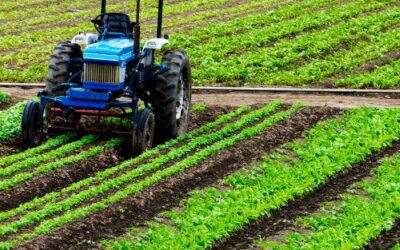
When you need to track your assets you need to use reliable technology. Your chosen asset register format should ideally make tracking assets a breeze. However, this is not always the case. The good news is that when you use RFID tags alongside your asset register, things become easier.
Let’s take a look at just why RFID tags are exactly what you need.
What RFID Tags Are
Radio Frequency Identification (RFID) tags contain very good technology. They allow a scanner/reader to identify specific radio waves. It’s these waves that tell the scanner what an asset does/is. However, a tag such as this can only work this way if it’s already been programmed.
When you set up an asset register, you need to attach an RFID tag to all of your assets. Then, it’s time to scan a tag and fill it with the information you need. Depending on the asset register format you choose, you could add a lot of information to it. This information should help you to quickly identify the asset. It could even help you to learn how the machine, for example, works or who is currently using it.

Why RFID Tags Are Better Than QR Codes
Some businesses tend to use QR codes when they’re tracking their assets. Other businesses use RFID tags. The latter option is without a doubt, the better of the two. Just make sure that your shiny new asset register format lets you use tags rather than codes.
Tags are better than codes for a number of reasons. Below, you can find just a few of these reasons listed:
- The scanner you use will automatically detect the tag without you having to scan it. This makes using tags so much more convenient.
- You don’t have to stick the tag in an easy-to-find place. Simply attach the RFID tag anywhere on the asset and it’ll work well.
- Tags often tend to last longer than QR codes. They’re known for being quite robust. This means they’re ideal for frequently used assets.
- Tags can be personalised. You could have your business’s logo added to your tags. This can make for easy identification. It’s also useful if you hire or lend your assets to others.
As you can see, using RFID tags just makes sense. While there’s nothing from stopping you using QR codes, they just don’t offer quite as much.
Using GPS Technology With RFID Tags
Using GPS technology with tags can help immensely with asset tracking. Regardless of which asset register format you use, it needs GPS technology.
Originally designed for use by the military, GPS is used by millions in this country. It helps us to get to where we need to be. It also helps us to locate assets in no time.
When you log into your asset register you can see where all of your assets are. This is all thanks to the power of GPS technology.
Imagine just being able to check where your assets are at the touch of a button. You could see if they’re in the correct location at any time. When used in combination with an asset register, wonderful things can happen.
Tracking Your Assets
Tracking assets is never easy, or should we say was never easy. Thanks to the way that almost every modern asset register format works, asset tracking can be easier than you think.
As long as you have attached an RFID tag to your assets you can create an asset register. Ideally, your new asset register format will allow you to input a lot of information about each asset. Once this information has been added, it’s time to track your assets. You could see the location of each of your assets both day and night. You could see whether they’re in the correct office or the correct site. You could also see who is in the queue to use the asset in question and who already has. Tracking your assets is not just very convenient. It can help to save your business both time and money. It can help you to become more productive.
Tracking the location of your assets by using GPS and RFID tags can give you reassurance. You know you can track and locate your assets within a few seconds. Consequently, your business’s security levels will rise. This is because you can see each asset’s location. So, if something is in the wrong location, you can tell. A result of this means that fewer assets will go missing. Imagine being able to locate all of your assets within a very short space of time. Imagine being able to take full control of your assets. This is perfectly possible when you use RFID tags to help you manage your assets.
Would you like to chat with an asset register format expert about using RFID tags? Contact us now at team@itemit.com.

Try itemit
Choose a better way to track
your assets.
Start your free 14-day trial now!

Keep Learning
itemit Blog
Tips, guides, industry best practices, and news.
Top QR Code Alternative Solutions for Asset Tracking
Discover the best QR code alternative solutions for efficient asset tracking. Learn how itemit’s innovative technology enhances tracking management.
Track Your Agricultural Assets With RFID Tags
Discover how RFID technology enhances agriculture management with better inventory tracking, livestock monitoring, and operational efficiency, even for small farms.
Which Is Better? RFID Tags Or Barcodes?
Is RFID asset tracking better than using barcodes or is it vice versa? Read this post now to discover which option is ideal for you!



